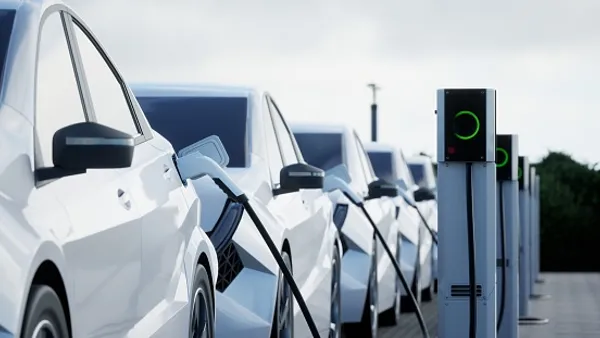Dive Brief:
- The Departments of Interior and Energy released Tuesday an action plan for developing offshore wind transmission off the Atlantic coast of the U.S., outlining immediate goals to be accomplished by 2025 as well as ones for 2030, 2040, and sustained actions to continue to 2050 and beyond.
- Immediate goals include updating reliability standards and identifying interconnection points, while mid-term goals include regulated interregional joint transmission planning.
- “There is an immense need for coordination,” said the Natural Resources Defense Council’s senior advocate for renewable energy Cullen Howe. “Unless planned in a proactive and coordinated way, developing these systems could bring substantially higher costs, more environmental harm, and more onerous community impacts.”
Dive Insight:
The plan – developed by the Interior Department’s Bureau of Ocean Energy Management, or BOEM, and DOE’s Grid Deployment Office – is considered “interim” and may be updated when the Atlantic Offshore Wind Transmission Study is completed, the agencies said.
The plan’s goals focus on increasing partnerships and collaboration among decision makers in Atlantic offshore wind, standardizing and improving necessary technology, providing clearer federal guidance on environmental reviews and permitting requirements, and making reforms to the interconnection queue.
Interconnection backlogs in the U.S. have skyrocketed since 2005, with an April report from Lawrence Berkeley National Laboratory finding 1,350 GW of generation waiting to connect to the grid. More than 95% of energy in the queue is zero-carbon.
Through 2050 and beyond, the plan identifies sustained actions for continued growth that include state-led transmission planning, federally designated national interest electric transmission corridors, and international cooperation.
Along the Atlantic coast, “there are many states and independent transmission planning bodies that have dissimilar or even disparate policies, processes, goals, and priorities,” Energy and Interior wrote.
“The physical transmission system, although electrically connected, varies in topology and voltage class between regions, and is already vastly oversubscribed, with the capacity in the interconnection queues exceeding the existing transmission network capacity,” they said.
Howe agreed, saying that one of the key barriers to an interconnected offshore wind transmission network is the need for coordination among “federal, state, and regional leaders like grid operators and RTOs.”
“The plan laid out by DOE and DOI offers a proactive roadmap, and now we need the administration to bring groups to the table and start working toward results,” he said.
NRDC pointed to a report that the Brattle Group had completed in January on behalf of it and several clean energy groups, which found that proactive transmission planning and coordination for offshore wind could save up to $20 billion.















